
 Flash News
Flash News
Gunfire in Durres, a 30-year-old man is injured
Accident on Arbri Street, car goes off the road, two injured
Arrests of "Bankers Petrolium", Prosecution provides details: Exported and sold 532 billion lek of oil, caused millions of euros in damage to the state
Ndahet nga jeta tragjikisht në moshën 28-vjeçare ylli i Liverpool, Diogo Jota
Posta e mëngjesit/ Me 2 rreshta: Çfarë pati rëndësi dje në Shqipëri

Kastrijot Çuedari, together with his wife, Dezdemona, with their 30-year experience in the olive processing sector, for 8 years in the factory set up in the village of Otllak, produce the "extra virgin" oil from the large olives of Berat.
Also known in the area as "the father of olive processing", Mr. Çuedari claims that until now, it turns out that the amount of olives produced is higher than the previous year.
But the problem is the increase in the cost of production, from the yield of olives, which has almost halved. In addition, for the year 2024, olive growers have increased labor costs, which, together with the decrease in yield, remain the main factors that have influenced the cost increase.
"This year, in the area of Berat, the amount of olives produced is higher compared to 2023. But the problem is the drop in yield. Due to the high temperatures, during the months of July-August, the fruit shrinks, while further the weather wet, at the beginning of autumn brought swelling of the grain, negatively affecting the production yield.
So far, it turns out that the yield has decreased by 50% compared to years. While the services from growers have increased, due to profitability", he says.
At the factory, Mr. Çuedari is collecting oil from farmers at a price of 600-630 ALL per liter, at the same values as last year.
Further, towards the distributors of most food goods in Tirana, including the cost, such as transport, VAT 20% of grinding olives, the increased expenses for the payments of factory workers and VAT payments of 20% of the sale, unpackaged oil is traded at a price of 840 per liter.
Although production costs have increased, he is reluctant to sell the oil at a higher price than in years, as it risks reducing consumption. But if the weather temperatures will continue to remain high, for them this is seen as a negative factor, which will further affect the yield, but also the price.
"We don't know how the weather will continue, but also how the yield of unharvested olives will be. High temperatures in this period are considered negative for production yield. If the weather continues to be warm, it will reduce the yield, therefore increasing the selling price," he asserts.
Both growers and processors are facing the additional cost of paying workers. Farmers in the village of Otllak claimed that if last year, an olive picker was paid a maximum of 1,500 to 2,000 Lek/day, this year the maximum payments have reached from 2,500 to 3,000 Lek/day.
The increase is up to 34%. The payment of loading-unloading workers and processing department staff in olive oil processing factories last year reached up to 2,000 ALL/day. This year, the payment for them has increased by 50%, reaching 3,000 ALL/day.
Immigration, a growing problem
But even though the payments to the harvesters have increased, the olive farmers are still worried, as they are having difficulty finding them, due to immigration. For some, not finding employees and not meeting the expenses for their payments is having a negative impact, leaving the olives on the tree, unharvested.
Even the representative of the "Subashi" oil processing and gathering factory in Marikaj, Mrs. Silvana Subashi, raises the concern of the high increase in production costs.
From the doubling of payments to the harvesters, the decrease in production yield, the competition of collection points for the export of rifujo oil to Italy, Mrs. Subashi calculates that the cost of producing one liter of oil has reached 940 ALL.
Consequently, she says that she will sell the unpackaged oil, including transport costs, taxes, etc., for 1,100 ALL per liter, while the price of labeled olive oil is expected to go up to 1,500 ALL per liter.
"The doubling of labor fees is the main factor that made the cost of olive oil production more expensive this year. If last year, harvesters were paid 200 Lek for shaking 1 kg of olives, this year, harvesters were paid 400 Lek, as it is impossible to find employees. The fee for shaking olives, 400 lek per kg, is too high.
The other factor that has influenced the increase in production cost is the drastic drop in production yield. If last year, for crops the production yield was from 15 to 17 liters of olive oil, for 1 kv of olives, this year it has reached 10 to 12 liters. The drop in yield is drastic.
Due to these main factors, including the costs for olive maintenance and service, the cost of olive oil production is calculated at 940 ALL per liter, i.e. higher than in years.
Another factor is the increase in the number of collection points for refujo oil that is exported to Italy.
Ms. Subashi predicts that the increase in the sale price of olive oil will fluctuate its consumption at low levels.
According to the data of the Ministry of Agriculture, in 2023, 28.3 thousand tons of olive oil were produced. Compared to the previous year, production fell by 3%. The amount of olive oil produced in 2022 turns out to be higher in the last 15 years.
Latest news






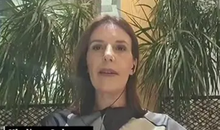

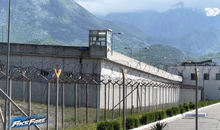

Greece imposes fee to visit Santorini, how many euros tourists must pay
2025-07-03 20:50:37
Don't make fun of the highlanders, Elisa!
2025-07-03 20:43:43
Gunfire in Durres, a 30-year-old man is injured
2025-07-03 20:30:52

The recount in Fier cast doubt on the integrity of the vote
2025-07-03 20:09:03
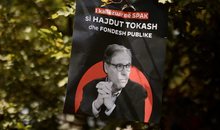



Heatwave has left at least 9 dead this week in Europe
2025-07-03 19:00:01
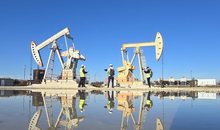
Oil exploitation, Bankers accused of 20-year fraud scheme
2025-07-03 18:33:52
Three drinks that make you sweat less in the summer
2025-07-03 18:19:35
What we know so far about the deaths of Diogo Jota and his brother André Silva
2025-07-03 18:01:56



Another heat wave is expected to grip Europe
2025-07-03 17:10:58

Accident on Arbri Street, car goes off the road, two injured
2025-07-03 16:45:27

Accused of two murders, England says "NO" to Ilirjan Zeqaj's extradition
2025-07-03 16:25:05




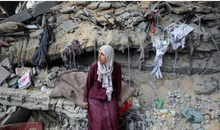
Gaza rescue teams: Israeli forces killed 25 people, 12 in shelters
2025-07-03 15:08:43
Diddy's trial ends, producer denied bail
2025-07-03 15:02:41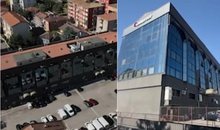
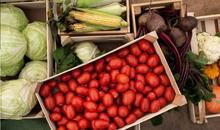
Agricultural production costs are rising rapidly, 4.8% in 2024
2025-07-03 14:55:13
Warning signs of poor blood circulation
2025-07-03 14:49:47
Croatia recommends its citizens not to travel to Serbia
2025-07-03 14:31:19
Berisha: Albania is the blackest stain in Europe for the export of emigrants
2025-07-03 14:20:19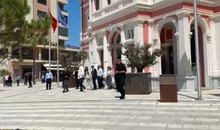

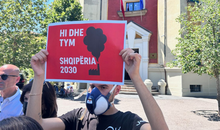
'Ministry of Smoke': Activists Blame Government for Wasteland Fires
2025-07-03 13:59:09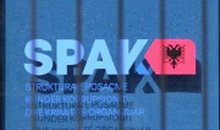

AFF message of condolences for the tragic loss of Diogo Jota and his brother
2025-07-03 13:41:36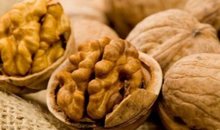
Five healthy foods you should add to your diet
2025-07-03 13:30:19






A unique summer season, full of rhythm and rewards for Credins bank customers!
2025-07-03 12:12:20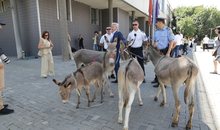

Fire situation in the country, 29 fires reported in 24 hours
2025-07-03 12:00:04
The constitution of the Kosovo Assembly fails for the 41st time
2025-07-03 11:59:57
The gendering of politics
2025-07-03 11:48:36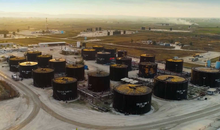
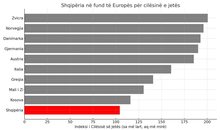
The price we pay after the "elections"
2025-07-03 11:25:39

Xhafa: The fire at the Elbasan landfill was deliberately lit to destroy evidence
2025-07-03 11:08:43

The 3 zodiac signs that will have financial growth during July
2025-07-03 10:48:01
Democratic MP talks about the incinerator, Spiropali turns off her microphone
2025-07-03 10:39:24

Ndahet nga jeta tragjikisht në moshën 28-vjeçare ylli i Liverpool, Diogo Jota
2025-07-03 10:21:03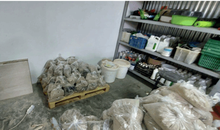
Cocaine trafficking network in Greece, including Albanians, uncovered
2025-07-03 10:10:12


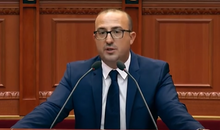
Korreshi: Election manipulation began long before the voting date
2025-07-03 09:39:13
Arrest of Greek customs officer 'paralyzes' vehicle traffic at Qafë Botë
2025-07-03 09:28:41
After Tirana and Fier, the boxes are opened in Durrës today
2025-07-03 09:21:10
Enea Mihaj transfers to the USA, will play as an opponent of Messi and Uzun
2025-07-03 09:10:04

Foreign exchange, the rate at which foreign currencies are sold and bought
2025-07-03 08:53:50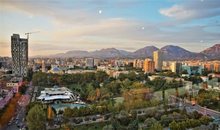
Index, Albania has the worst quality of life in Europe
2025-07-03 08:48:10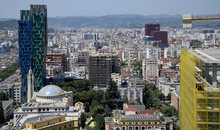


Horoscope, what do the stars have in store for you today?
2025-07-03 08:17:05
Clear weather and high temperatures, here's the forecast for this Thursday
2025-07-03 08:00:37
Posta e mëngjesit/ Me 2 rreshta: Çfarë pati rëndësi dje në Shqipëri
2025-07-03 07:46:48



Lufta në Gaza/ Pse Netanyahu do vetëm një armëpushim 60-ditor, jo të përhershëm?
2025-07-02 21:56:08
US suspends some military aid to Ukraine
2025-07-02 21:40:55



Methadone shortage, users return to heroin: We steal to buy it
2025-07-02 20:57:35
Government enters oil market, Rama: New price for consumers
2025-07-02 20:43:30
WHO calls for 50% price hike for tobacco, alcohol and sugary drinks
2025-07-02 20:41:53



